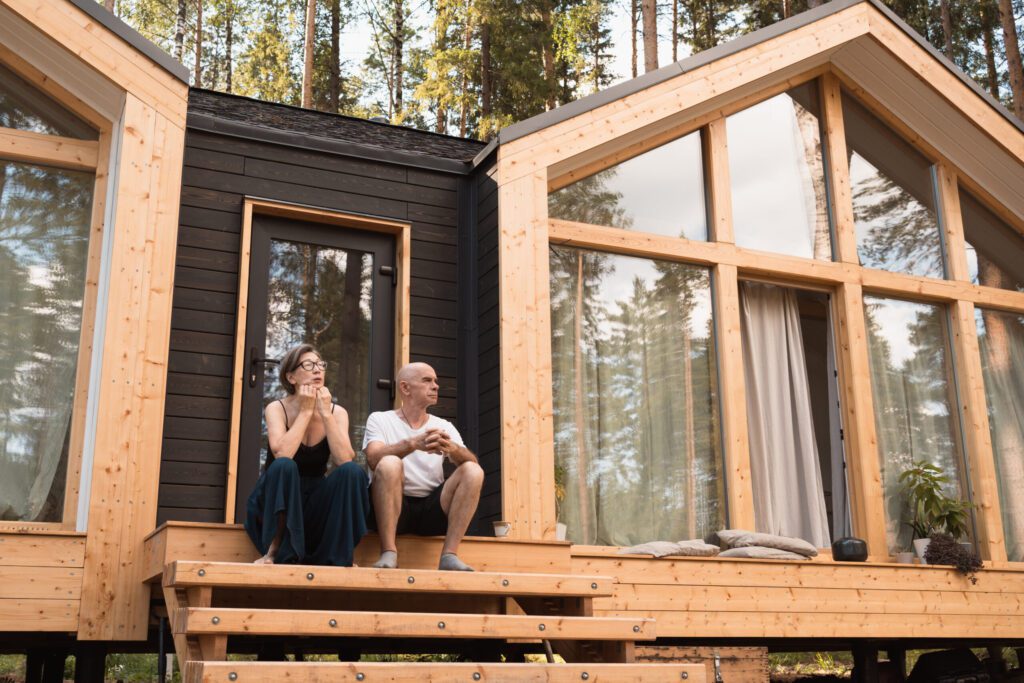- By Ali Awais
- May 27, 2025
- No Comments
The tiny home movement is rapidly evolving, and New Bedford, Massachusetts, is at the forefront of this trend in 2025. With growing interest in affordable housing, sustainability, and simpler living, tiny homes have become a compelling option for many residents and newcomers alike. This comprehensive guide dives deep into everything you need to know about tiny homes in New Bedford — from legal considerations, zoning changes, and costs, to lifestyle benefits and challenges. For more detailed information and resources, be sure to check out our dedicated page on Tiny Home New Bedford.


Table of Contents
ToggleWhat is a Tiny Home?
A tiny home is typically defined as a residential dwelling that is under 400 square feet in size. These homes maximize efficiency and functionality within a compact space, focusing on minimalist design, smart storage, and multipurpose living areas.
Tiny homes come in two primary forms:
Tiny Houses on Wheels (THOWs): Mobile homes built on trailers for portability.
Foundation-built Tiny Homes: Permanent structures built on traditional foundations.
Many tiny homes also serve as Accessory Dwelling Units (ADUs) — small living spaces added to existing residential properties, either attached or detached.
Why Tiny Homes Are Gaining Popularity in New Bedford
1. Affordable Coastal Living
New Bedford has historically been known for its beautiful coastal charm and vibrant culture. However, like many coastal cities, rising housing costs have made homeownership a challenge for many residents. Median home prices in New Bedford hover around $400,000 as of 2025, creating a barrier for first-time buyers and those on modest incomes.
Tiny homes offer an affordable alternative, with construction costs ranging from $20,000 for simple DIY models to around $150,000 for custom-built homes. This price range is significantly lower than traditional single-family homes, making homeownership or investment property ownership more attainable.
2. Recent Legislative Changes Supporting Tiny Homes
Massachusetts has recently enacted progressive laws aimed at increasing affordable housing options. The Affordable Homes Act passed in 2024 allows accessory dwelling units (ADUs) up to 900 square feet to be built by right in single-family zoning districts, removing many traditional barriers.
New Bedford is aligning its local zoning regulations to accommodate this state law, easing restrictions on both attached and detached ADUs. This shift is pivotal in enabling residents to build tiny homes legally and encourages the use of existing properties for affordable housing expansion.
3. Environmental and Sustainability Focus
New Bedford has committed itself to green living and sustainability initiatives. Tiny homes naturally complement these goals by reducing resource consumption, lowering energy bills, and minimizing ecological footprints.
Many tiny homes incorporate eco-friendly materials, solar panels, rainwater harvesting, and energy-efficient appliances — making them an excellent choice for environmentally conscious residents.
Understanding the Legal Landscape for Tiny Homes in New Bedford
Navigating local building codes, zoning laws, and permits is crucial for anyone considering a tiny home.
Building Codes
Massachusetts has adopted specialized codes for tiny homes under the International Residential Code (IRC) Appendix Q. This appendix includes guidelines for ceiling heights, loft use, stair dimensions, and emergency exits specifically tailored to the unique dimensions of tiny homes.
Zoning and Permitting
While the state law mandates that ADUs up to 900 square feet be allowed by right, the exact zoning ordinances in New Bedford are still evolving to fully comply. Property owners must work with the New Bedford Building Department to ensure their tiny home or ADU plans meet local safety, setback, and land use requirements.
It is essential to check whether a tiny home will be classified as a permanent residence, recreational vehicle, or accessory structure — as this affects permit requirements and allowable uses.
Types of Tiny Homes Popular in New Bedford
Tiny Houses on Wheels (THOWs)
These are tiny homes built on trailer chassis, allowing for mobility. THOWs appeal to those who want flexibility in location or are testing the tiny home lifestyle before committing to permanent residency.
However, because they are considered vehicles by many municipalities, THOWs sometimes face restrictions on where they can be parked long-term or whether they qualify for residential permits.
Foundation-Built Tiny Homes
Built on permanent foundations, these tiny homes must meet all local building codes for residential dwellings. They tend to have better access to utilities, financing options, and more permanence in ownership.
Accessory Dwelling Units (ADUs)
ADUs are a growing trend in New Bedford. They can be either attached (like a basement or garage conversion) or detached (a small separate building on the same lot). ADUs allow homeowners to add rental income or provide housing for family members.
The 2024 Massachusetts legislation has made ADUs much easier to develop in New Bedford, making this the most straightforward path to tiny home living for many residents.

The Cost Breakdown of Building and Owning a Tiny Home
Costs vary widely based on size, design, construction method, and location of the lot:
DIY Tiny Homes: Building your own tiny home can cost between $20,000 and $40,000, depending on materials and how much work you do yourself.
Prefab Kits: Ready-made kits range from $30,000 to $60,000 and simplify the build process.
Custom Builds: Hiring a builder for a fully customized tiny home can cost anywhere from $60,000 to $150,000 or more.
Beyond construction, costs include:
Land acquisition (if you don’t already own a lot)
Site preparation and utility hookups (water, electricity, sewer)
Permits and inspections
Furnishings and appliances
Financing Your Tiny Home in New Bedford
Traditional mortgage lenders often hesitate to finance tiny homes due to their small size or classification as non-permanent structures.
Alternatives include:
Personal Loans: Generally unsecured loans with higher interest rates but easier approval.
Chattel Loans: Secured loans designed for movable homes like THOWs.
Builder Financing: Some tiny home companies provide in-house financing or partner with lenders.
Home Equity Loans: If you own property, borrowing against equity may be an option.
Benefits of Tiny Home Living
Affordability
Tiny homes are significantly less expensive than traditional homes, lowering barriers to homeownership and freeing up money for other priorities.
Environmental Impact
Smaller homes use less energy for heating and cooling, require fewer building materials, and encourage sustainable living habits.
Lifestyle Simplicity
Tiny homes foster a minimalist lifestyle that many find liberating — less clutter, less maintenance, and more focus on experiences over possessions.
Flexibility
Mobile tiny homes and ADUs provide versatile living arrangements, whether as guest houses, rental units, or primary residences.
Challenges and Considerations
Space Limitations
Living in a tiny home requires careful planning and adjustment to limited storage and living areas. It’s important to assess your lifestyle needs before downsizing.
Zoning and Regulatory Hurdles
Even with recent legislation, navigating local rules can be complicated and time-consuming. Working with local officials early in the process is crucial.
Resale Value and Market Acceptance
The tiny home market is still emerging, and resale values can be unpredictable. Potential buyers may have different expectations.
Final Thoughts: Is a Tiny Home Right for You in New Bedford?
Tiny homes represent a promising path to affordable, sustainable, and flexible living in New Bedford, Massachusetts. With recent legislative changes and growing public support, 2025 is an excellent time to explore this lifestyle.
If you’re interested in reducing your housing costs, embracing environmental responsibility, or simply living with less, a tiny home or ADU in New Bedford could be your perfect solution.
Before making any decisions, take time to research local zoning, building codes, and financing options. Connect with local builders, architects, and city officials to navigate the process smoothly.
The tiny home movement is not just a trend; it’s a shift toward smarter, more intentional living — and New Bedford is embracing that future wholeheartedly.




